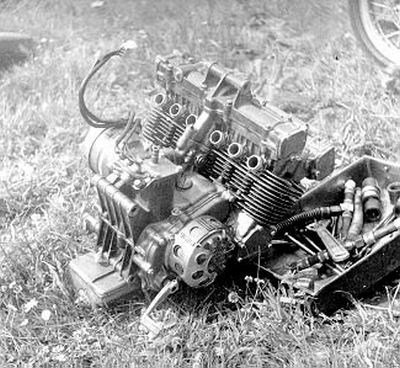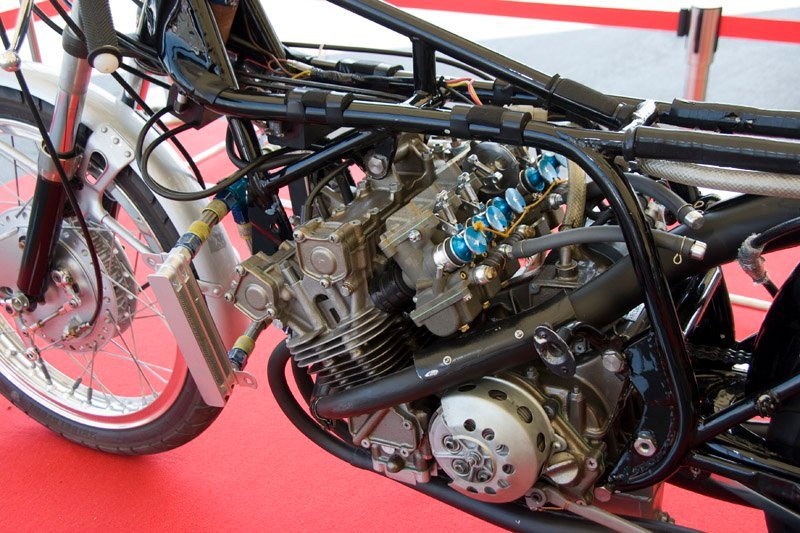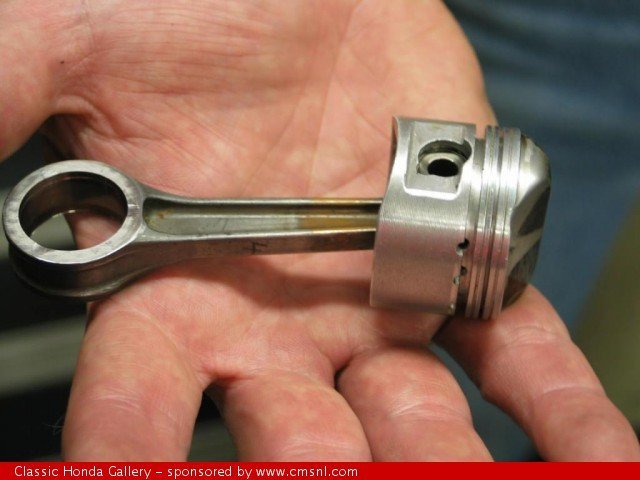-
Posts
1,275 -
Joined
-
Last visited
Content Type
Profiles
Forums
Gallery
Events
Everything posted by shipman
-
I can't remember the exact dimension, but the kit deck is around 4mm too high in the hull as is. The deck houses stand proud of the bulwarks, when their roofs should be level with them. By implication. it would seem the internal detail of the bulwarks isn't quite correct. See how the freeing ports molded outside, the bottom edge should be level with the deck, but they aren't. Getting the 'oval' panels proportionally correct would (to my eye) only emphasize the above disparity.
- 89 replies
-
- Cutty Sark
- Revell
-
(and 2 more)
Tagged with:
-

Honda RC166 Grand Prix Racer by CDW - FINISHED - Tamiya - 1/12
shipman replied to CDW's topic in Non-ship/categorised builds
Rob, I agree ... see my post#5. -

Honda RC166 Grand Prix Racer by CDW - FINISHED - Tamiya - 1/12
shipman replied to CDW's topic in Non-ship/categorised builds
For many years this Honda was only second to Guzzi's fabled 500 V-8 as the most exotic motorcycle in the world. Thanks for letting us peek over your shoulder. -

Honda RC166 Grand Prix Racer by CDW - FINISHED - Tamiya - 1/12
shipman replied to CDW's topic in Non-ship/categorised builds
Yup ... oil coolers. Mr. Honda didn't believe in water-cooling. Even their first 1.5lit F1 car had an air cooled across the chassis V-12, which in principle was two of these engine's on a common crank case! Made good use of your time on this one. -

Honda RC166 Grand Prix Racer by CDW - FINISHED - Tamiya - 1/12
shipman replied to CDW's topic in Non-ship/categorised builds
Yup, love the HD Flathead, all the classic Bobber proportions are there. The Beemer started life mid '70's, but as you compare the two bikes, the HD just crawls with class. The Beemer doesn't! -

Honda RC166 Grand Prix Racer by CDW - FINISHED - Tamiya - 1/12
shipman replied to CDW's topic in Non-ship/categorised builds
Hi Craig. What is your idea of a 'grunge' bike? Bobbers have a high degree of respectability in the Custom community. Perhaps you mean a 'Rat' bike?.... deliberate designed-in 'rot'. -

Honda RC166 Grand Prix Racer by CDW - FINISHED - Tamiya - 1/12
shipman replied to CDW's topic in Non-ship/categorised builds
Your frustration is very understandable, you have my respect. With a bit of luck the extra links will do the trick and you can stop swearing at it! -

Honda RC166 Grand Prix Racer by CDW - FINISHED - Tamiya - 1/12
shipman replied to CDW's topic in Non-ship/categorised builds
May I suggest you trial fit the rear suspension units. The combined geometry between sprockets and swing arm pivot varies in operation. Looking at your photo, the wheel appears to be at its upper limit of travel. With suspension attached, the wheel should be relatively lower and due to the geometry should remove some of the slack. -

Honda RC166 Grand Prix Racer by CDW - FINISHED - Tamiya - 1/12
shipman replied to CDW's topic in Non-ship/categorised builds
Just had a thought..... If I were to tackle that chain assembly, I'd have a go at making a tool to press the links together. I'd find a brass pin from a household electrical plug, file one end to an appropriate shape and micro drill two holes spaced for the chain pins. As long as the holes are slightly bigger than the pins, it doesn't have to be 'rocket science' accurate. And there you have your own press to push the links together without bending them. The tweezers I highlighted are hardened, needle sharp and strong. -

Honda RC166 Grand Prix Racer by CDW - FINISHED - Tamiya - 1/12
shipman replied to CDW's topic in Non-ship/categorised builds
Try these ... ebay 6PCS Professional Coated Precision Tweezers Set Kit Stainless Steel Non-Magnetic -

Honda RC166 Grand Prix Racer by CDW - FINISHED - Tamiya - 1/12
shipman replied to CDW's topic in Non-ship/categorised builds
I believe the test rider is Hiraku Miyagi. Glad you enjoyed the video's. Honda weren't entirely dominant during those years. Both Yamaha and Suzuki fielded their own exotic two strokes. Suzuki built a 3 cylinder 50cc. At the end of 1967 the governing race organization (FIM) decided things were getting far too much and introduced severe restrictions in all classes in the hope of encouraging closer competition. Much like post war supercharging was banned for the same reasons. At the moment I'm not at liberty to divulge what was sitting on my table last night. When I can, it will be a real exclusive treat for late 1940's British GP enthusiasts. I'm fortunate to know some fascinating characters who have even more fascinating motorcycles. -

Honda RC166 Grand Prix Racer by CDW - FINISHED - Tamiya - 1/12
shipman replied to CDW's topic in Non-ship/categorised builds
Yep, those were the 'GLORY' days when race paddocks were basically a field. No motor homes, teams living in tents and utility vans. Most riders survived on 'start money' and a private sponsor. The envy was palpable, only the 'works' riders had contracts. And there were only 10-12 of them at best. Remember, they were all air cooled, double overhead camshaft, four valves per cylinder. Tool room specials, creative engineering and no computers by modern standards. Notice none had any flywheel effect and were a nightmare to ride. Only the lucky few got the chance and earned every penny. Track safety was straw bales and a bashed up ambulance. Finally the 500 4. That's Honda playing with its museum GP racers from 1966 in a glorified car park. Hope you don't mind the overload but it may put 1960's bike technology in front of a new audience. Finally, finally, serious nostalgia. -

Honda RC166 Grand Prix Racer by CDW - FINISHED - Tamiya - 1/12
shipman replied to CDW's topic in Non-ship/categorised builds
I remember building a 1:8 Honda race bike back in 1974. The chain for that was all individual plastic links and rollers which had to be glued together. My results were sadly predictable! As with all race bikes, each track needed different gearing, requiring a range of sprockets at the gearbox and rear wheel. Individual riders preferred their own set-up too. Then there were multi jets in each of the 6 carbs, requiring setting up for varying atmospheric conditions, which these engines were ultra sensitive to; as were spark plugs. Often the quickest way was a complete engine swap. The real jewel from that period was half the capacity.... a 125cc 5 cylinder! -

Honda RC166 Grand Prix Racer by CDW - FINISHED - Tamiya - 1/12
shipman replied to CDW's topic in Non-ship/categorised builds
Splendid detail improvement..... go for it! -

Honda RC166 Grand Prix Racer by CDW - FINISHED - Tamiya - 1/12
shipman replied to CDW's topic in Non-ship/categorised builds
CDW, that 'ferule' idea is brilliant and new to me. Alternately, the junctions could be micro-drilled to take the replacement wires; a little more labor there, but ultimately more secure and authentic. Looking forward to more results of your work. -

Honda RC166 Grand Prix Racer by CDW - FINISHED - Tamiya - 1/12
shipman replied to CDW's topic in Non-ship/categorised builds
Coming along nicely. One observation ... the various cables and wiring. The tube Tamiya provide is way over scale in most areas. My suggestion would be to find some fine electrical insulated wire from a phone line/computer wotsits in suitable colours. Or use wire or solder (painted). -

Honda RC166 Grand Prix Racer by CDW - FINISHED - Tamiya - 1/12
shipman replied to CDW's topic in Non-ship/categorised builds
The covers were magnesium and had to be protected from atmospheric moisture. I think originally a form of gold paint was used. I believe the black is a chemical derived coating. Here's an article featuring photo's of this engine in Honda's own museum. I recon they know what they're doing. https://caferacergarage.eu/honda-rc166-6-cylinder-racing-legend/ More.... http://www.deejay51.com/honda_hall_racebikes.htm I do also think it worth pointing out, though Hailwood is always associated with these bikes, Honda's first world champion was Jim Redman who did most of the early 6's development riding. Redman had a fall and broke his arm; that's how Hailwood got the job. Irelands Ralph Bryans also rode them regularly, normally, due to his sleight stature he was normally riding 50 and 125's. -

Honda RC166 Grand Prix Racer by CDW - FINISHED - Tamiya - 1/12
shipman replied to CDW's topic in Non-ship/categorised builds
More goodies .... useful and interesting info to be gleaned here. https://www.motorcyclistonline.com/honda-rc174-rc-reborn/ https://www.philaphoto.com/imageLibrary/thumbnails.php?album=1696 It's worth noting, the rc166 and rc174 were externally identical. The George Beale replicas were built with Honda's co-operation, and I think Honda themselves took one to play with. They were faithful in all details and finishes. -

Honda RC166 Grand Prix Racer by CDW - FINISHED - Tamiya - 1/12
shipman replied to CDW's topic in Non-ship/categorised builds
Here's a Japanese TV program where you get to see nearly every nut, bolt and washer of the engine being stripped in front of a live audience. I don't know of an English dubbed version, but this is a MUST SEE for anyone interested. -

Honda RC166 Grand Prix Racer by CDW - FINISHED - Tamiya - 1/12
shipman replied to CDW's topic in Non-ship/categorised builds
No, the crank was a pressed up affair. In fact if you picked it up off the bench without support, it actually sagged! The crank cases and main bearings are what gave it rigidity. A mechanic was asked to lift one of these engines onto a work bench. It was so light he assumed there were no internals...until it was opened up! The engine had no flywheel effect and had to be run at no less than 2,000rpm, or it just died. As this project develops, I'll find some references (if you're interested), to illustrate I'm not exaggerating. -

Honda RC166 Grand Prix Racer by CDW - FINISHED - Tamiya - 1/12
shipman replied to CDW's topic in Non-ship/categorised builds
The real thing was virtually a model it's self. Imagine 6 these things thrashing around at 20,000 rpm! -

Honda RC166 Grand Prix Racer by CDW - FINISHED - Tamiya - 1/12
shipman replied to CDW's topic in Non-ship/categorised builds
Sitting upright in excited anticipation. The Tamiya m/c kits are lovely little things. To do these faired bikes justice you really need to build two, faired and without.
About us
Modelshipworld - Advancing Ship Modeling through Research
SSL Secured
Your security is important for us so this Website is SSL-Secured
NRG Mailing Address
Nautical Research Guild
237 South Lincoln Street
Westmont IL, 60559-1917
Model Ship World ® and the MSW logo are Registered Trademarks, and belong to the Nautical Research Guild (United States Patent and Trademark Office: No. 6,929,264 & No. 6,929,274, registered Dec. 20, 2022)
Helpful Links
About the NRG
If you enjoy building ship models that are historically accurate as well as beautiful, then The Nautical Research Guild (NRG) is just right for you.
The Guild is a non-profit educational organization whose mission is to “Advance Ship Modeling Through Research”. We provide support to our members in their efforts to raise the quality of their model ships.
The Nautical Research Guild has published our world-renowned quarterly magazine, The Nautical Research Journal, since 1955. The pages of the Journal are full of articles by accomplished ship modelers who show you how they create those exquisite details on their models, and by maritime historians who show you the correct details to build. The Journal is available in both print and digital editions. Go to the NRG web site (www.thenrg.org) to download a complimentary digital copy of the Journal. The NRG also publishes plan sets, books and compilations of back issues of the Journal and the former Ships in Scale and Model Ship Builder magazines.







